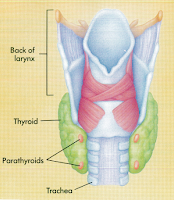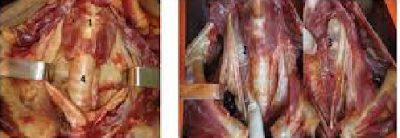what is the hormone
Shooting up in the locker room with anabolic steroids has caused the downfall of many winners. These controversial drugs are really synthetic hormones, chem. icals that affect the activity of specific organs or tissues. The various hormones of the body all affect their "target" tissues in unique ways. Anabolic steroids affect the body in ways similar to the male sex hormone testosterone and stimulate the buildup of muscles. But along with building a championship body, anabolic steroids strikingly change the body's metabolism.

Female athletes on steroids experience side effects such as shrinking breasts, a deepening voice, and an increase in body hair. Male athletes find that their testicles shrink. some users also experience life-threatening kidney and liver damage. Youngsters who take these drugs risk stunting their growth, since anabolic steroids cause bones to stop growing prematurely. And a great deal of controversy still surrounds claims that anabolic steroids can cause psychological effects such as "steroid rage," a state of mind in which users attack people and things around them. Today, scientists still lack solid scientific data regarding all aspects and consequences of anabolic steroid use. How-ever, it is clear that their use is risky at the least—and may put users in the cemetery rather than in the winner's circle.
what is the human endocrine system
Endocrine gland and their hormone
A hormone is a "chemical messenger" sent by a gland to other cells of the body. Traditionally, animal hormones have been described by scientists as the chemical products of glands that travel within the bloodstream to all parts of the body, causing an effect on specific cells, or target organs, far removed from that gland. Glands are individual cells or groups of cells that secrete substances. Their secretory portions are made up of specialized epithelial cells (see Chapter 9). The glands that secrete hormones spill these chemicals directly into the bloodstream and are called endocrine, or "ductless," glands. Glands that secrete other substances such as digestive enzymes or sweat route their secretions to specific destinations by means of ducts. In this way, for example, the digestive enzyme pancreatic amylase flows directly from the pancreas to the small intestine and goes nowhere else. Glands having associated "ductwork" are called exocrine glands.
Today, most scientists have expanded their definition of hormones to include any chemical produced by one cell that causes an effect in another. Included in this description, then, are substances such as neurotransmitters chemicals produced by the axon end of a nerve cell that travel to and bind with the dendrite end of an adjacent nerve cell, con-tributing to the propagation of the nerve impulse along that neuron (see Chapter 15). Such chemicals are often called local hormones because they affect neighboring target cells. The human body produces many local hormones; they are described later in this chapter.
Hormones are "chemical messengers" secreted by cells that affect other cells. Hormones that travel within the bloodstream and affect cells in another part of the body are called endocrine hormones. Hormones that do not travel within the bloodstream but only affect cells lying near the secretory cells are called local hormones.
The 10 different endocrine glands of the human body make over 30 different hormones. Together, these glands are called the endocrine system (Figure 19-1). The endocrine system works with the nervous system to integrate the functioning of the various tissues, organs, and organ systems of the body. The nervous system sends messages to muscles and glands, regulating muscular contraction and glandular secretion. The hormones of the endocrine system, on the other hand, carry messages to virtually any type of cell in the body. The messages of the endocrine hormones are varied but can be grouped into four categories:
1. Regulation: Hormones control the internal environment of the body by regulating the secretion and excretion of various chemicals in the blood, such as salts and acids.
2. Response:Hormones help the body respond to changes in the environment and cope with physical and psycho-logical stress.
3. Reproduction: Hormones control the female reproductive cycle and other reproductive processes essential to conception and birth and control the development of sex cells, the reproductive organs, and secondary sexual characteristics (those that make men and women different) in both sexes. 4. Growth and development: Hormones are essential to the proper growth and development of the body from conception to adulthood.
Once molecules of a hormone are released into the bloodstream, they travel throughout the body. Although hormone molecules may pass billions of cells, specific hormones only affect specific cells called target cells. Hormones recognize target cells because they bind to receptor molecules embedded within the cell membrane or located within the cytoplasm of the cell. The binding of a hormone molecule to a receptor molecule activates a chain of events in the target cell that results in the effect of the hormone being expressed.
Two major classes of endocrine hormones work within the human body: peptide hormones and steroid hormones. Peptide hormones are made of amino acids, but the amino acid chain length varies greatly from hormone to hormone. The smallest are actually modifications of the single amino acid tyrosine. Somewhat larger are short peptide hormones that are several amino acids in length. Polypeptide hormones have chain lengths of several dozen or more amino acids, such as the hormone insulin. Even larger are protein hormones that may have over 200 amino acids with carbohydrates attached at several positions.
Human endocrine system
Unable to pass through the cell membrane, peptide hormones bind to receptor molecules embedded in the cell membrane of target cells. The binding of hormone to a receptor triggers an increase in that cell's production of a compound referred to as a second messenger. A second messenger triggers enzymes that cause the cell to alter its the endocrine glands pictured in this diagram secrete chemical messengers that travel through the bloodstream to affect other cells in the body
How peptide hormones work
functioning in response to the hormone For example, prolactin stimulates cells of the mammary glands to produce milk. Target cells respond as enzymes "go into action" catalyzing reactions that produce the components of mother's milk. Other types of hormone responses include the secretion of substances from target cells and the closing or opening of certain "protein doors" within target cell membranes. Cyclic adenosine monophosphate (cyclic AMP for short), a "cousin" of ATP (see Chapter 6), acts as a second messenger to many cells. Besides cyclic AMP, other second messenger molecules have been discovered.
Once inside the cell, peptide hormones bind to the cell membrane and trigger an increase of second messenger com-pounds within the cell, such as cyclic AMP. The second Messenger in turn activates enzymes that alter the cell's function in response to the hormonal message.

How steroid hormones work
Steroid hormones are all made from cholesterol, a lipid synthesized by the liver. You know cholesterol as that "dietary devil" present in certain foods such as eggs, dairy products, and beef. A characteristic of steroid hormones is their set of carbon rings. Steroid hormones, being lipid soluble, pass freely through the lipid bilayer of the cell membrane. Once inside a cell, these hormones bind to receptor molecules located within the cytoplasm of target cells. Together, the hormone-receptor complex moves into the nucleus of the cell, causing the cell's hereditary material, or DNA, to trigger the production of certain proteins . In Steroid hormones are able to pass through the cell membrane without the aid of a receptor molecule. Inside the cell, they bind with receptor molecules. The hormone-receptor complex then enters the nucleus of the cell, where it acts on DNA to produce proteins. These proteins control physiological processes such as growth and development.
A simple feedback loop
In response to a stimulus, an endocrine gland releases a specific hormone that acts on a specific target tissue. The effect of the hormone on the target tissue either causes the gland to release more of the hormone (positive feedback) or causes the gland to slow or stop its production of the hormone (negative feedback).
response to the sex hormones estrogen or testosterone, for example, the proteins produced are those involved in such processes as the development and maintenance of female or male sexual characteristics.
Two main classes of endocrine hormones are pep-tide hormones and steroid hormones. Both travel within the bloodstream to all parts of the body but affect only certain target cells. Peptide hormones bind to receptors on the cell membrane of target cells and ultimately trigger enzymes that alter cell functioning. Steroid hormones bind to receptors within the cytoplasm of target cells and ultimately cause the hereditary material of the cell to produce specific proteins.
The production of hormones is regulated by a mechanism called a feedback loop. In general, hormonal feedback loops work in the following way: endocrine glands are initially stimulated to release hormones. Stimulation of an endocrine gland occurs in one of three ways:
1. Direct stimulation by the nervous system: The sensation of fear, for example, can cause the autonomic nervous system to trigger the release of the hormone adrenaline from the adrenal medulla. 2. Indirect stimulation by the nervous system by means of re-leasing hormones: The hypothalamus is a specialized portion of the brain that produces and secretes releasing hormones. Some releasing hormones stimulate the re-lease of other hormones; some prevent the release.
3. The concentration of specific substances in the bloodstrecon. The blood level of a substance such as glucose or calcium. for example, may signal an endocrine gland to "turn ow, or "turn off"
After an endocrine gland secretes its hormone into the bloodstream, the hormone travels throughout the body via the circulatory system and interacts with target tissues. The target tissues cause the desired effect to be produced. This "effect" acts as a new stimulus to the endocrine gland (Figure 19-4). Put simply, the body "feeds back" information to each endocrine gland after it releases hormone. In a positive feedback loop, the information that is fed back causes the gland to produce more of its hormone. In a negative feed. back loop, the feedback causes the gland to slow down or to stop the production of its hormone. Most hormones work by means of negative feedback loops. (Specific examples of feedback mechanisms and interactions are discussed throughout this chapter.)
 he adrenal glands he two adrenal glands are named for their position in the body above (ad meaning "near") the kidneys (renal mean-g "kidney"). Each of these triangular glands has two parts 'with two different functions. The adrenal cortex is the outer, yellowish portion of each adrenal gland. he word cortex comes from a Latin word meaning "bark" d is often used to refer to the outer covering of a tissue,organ, or gland. The adrenal medulla is the inner, reddishprortion of the gland and is surrounded by the cortex. Notsurprisingly, the word medulla comes from a Latin word caning "marrow" or "middle."
he adrenal glands he two adrenal glands are named for their position in the body above (ad meaning "near") the kidneys (renal mean-g "kidney"). Each of these triangular glands has two parts 'with two different functions. The adrenal cortex is the outer, yellowish portion of each adrenal gland. he word cortex comes from a Latin word meaning "bark" d is often used to refer to the outer covering of a tissue,organ, or gland. The adrenal medulla is the inner, reddishprortion of the gland and is surrounded by the cortex. Notsurprisingly, the word medulla comes from a Latin word caning "marrow" or "middle." 












